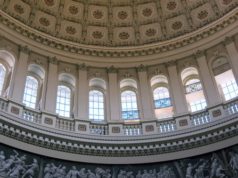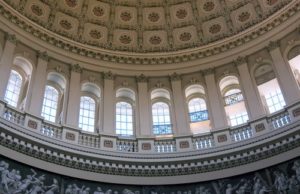In the intricate landscape of regulatory compliance, administrative enforcement actions serve as a pivotal mechanism for ensuring adherence to laws and regulations. Often overlooked, these actions represent a powerful tool wielded by administrative agencies to uphold standards, protect public interests, and deter non-compliance. This article delves into the nuances of administrative enforcement actions, exploring their definition, the roles of various agencies, key mechanisms employed, successful case studies, challenges faced, and future trends that may shape their evolution.
Understanding Administrative Enforcement Actions: Definition and Scope
Administrative enforcement actions refer to the processes and measures taken by governmental agencies to ensure compliance with laws and regulations. Unlike criminal enforcement, which involves prosecution in a court of law, administrative enforcement typically occurs within the agency’s own framework. These actions can include fines, license suspensions, and other penalties aimed at individuals or organizations that violate regulatory standards. The scope of administrative enforcement is broad, encompassing various sectors such as environmental protection, financial regulation, health and safety, and consumer protection, thereby playing a crucial role in maintaining order and accountability within society.
The Role of Administrative Agencies in Enforcing Regulations and Compliance
Administrative agencies are the backbone of regulatory enforcement, tasked with the implementation and oversight of specific laws. These agencies, which include entities such as the Environmental Protection Agency (EPA), the Securities and Exchange Commission (SEC), and the Occupational Safety and Health Administration (OSHA), are empowered to investigate potential violations, impose penalties, and ensure compliance through various means. Their role extends beyond mere enforcement; they also engage in rulemaking, provide guidance to regulated entities, and facilitate public education on compliance requirements. This multifaceted approach enables agencies to effectively manage compliance and foster a culture of accountability among businesses and individuals.
Key Mechanisms of Administrative Enforcement: Tools and Strategies Explained
Administrative enforcement actions utilize a variety of mechanisms to achieve compliance. Key tools include administrative fines, cease and desist orders, and license revocations, each serving as a deterrent against non-compliance. Additionally, agencies may employ consent decrees, which are agreements between the agency and the violator to rectify the issue without admitting guilt. Investigative powers, such as subpoenas and inspections, allow agencies to gather evidence and assess compliance levels. Furthermore, agencies often engage in collaborative efforts with stakeholders to promote compliance through education and outreach, thereby enhancing the effectiveness of their enforcement strategies.
Case Studies: Successful Outcomes from Administrative Enforcement Actions
Numerous case studies highlight the effectiveness of administrative enforcement actions in achieving compliance and rectifying violations. For instance, the SEC’s enforcement of securities laws has led to significant penalties against corporations for fraudulent activities, ultimately restoring investor confidence and promoting market integrity. Another notable example is the EPA’s enforcement of the Clean Air Act, which has resulted in substantial reductions in air pollutants through penalties and compliance agreements with major industries. These cases illustrate the potential for administrative enforcement to not only penalize wrongdoing but also to drive systemic change and promote adherence to regulatory standards.
Challenges and Criticisms of Administrative Enforcement in Regulatory Frameworks
Despite their importance, administrative enforcement actions face several challenges and criticisms. One significant concern is the perceived lack of transparency and due process in administrative proceedings, which can lead to allegations of overreach or arbitrary decision-making by agencies. Additionally, the balance between effective enforcement and fostering a cooperative relationship with regulated entities can be difficult to maintain. Critics argue that overly aggressive enforcement can stifle innovation and economic growth, while others contend that insufficient enforcement allows for widespread non-compliance. Navigating these challenges requires a careful approach that considers the interests of both regulators and the regulated community.
Future Trends: Evolving Practices in Administrative Enforcement Actions
As regulatory landscapes evolve, so too do the practices surrounding administrative enforcement actions. Increasingly, agencies are leveraging technology and data analytics to enhance their enforcement capabilities, allowing for more targeted investigations and proactive compliance monitoring. Additionally, there is a growing emphasis on collaborative enforcement approaches, where agencies work alongside industry stakeholders to develop compliance frameworks that are both effective and sustainable. Furthermore, the rise of environmental, social, and governance (ESG) considerations is prompting agencies to adapt their enforcement strategies to address emerging risks and societal expectations. These trends indicate a shift towards more dynamic and responsive administrative enforcement practices that align with contemporary challenges.
In conclusion, administrative enforcement actions represent a critical component of regulatory compliance, wielding significant influence over various sectors. As administrative agencies continue to evolve in their roles and strategies, the effectiveness of these enforcement actions will depend on their ability to balance rigorous enforcement with transparency and collaboration. By understanding the power and potential of administrative enforcement, stakeholders can better navigate the complexities of regulatory compliance and contribute to a more accountable and equitable society.


































